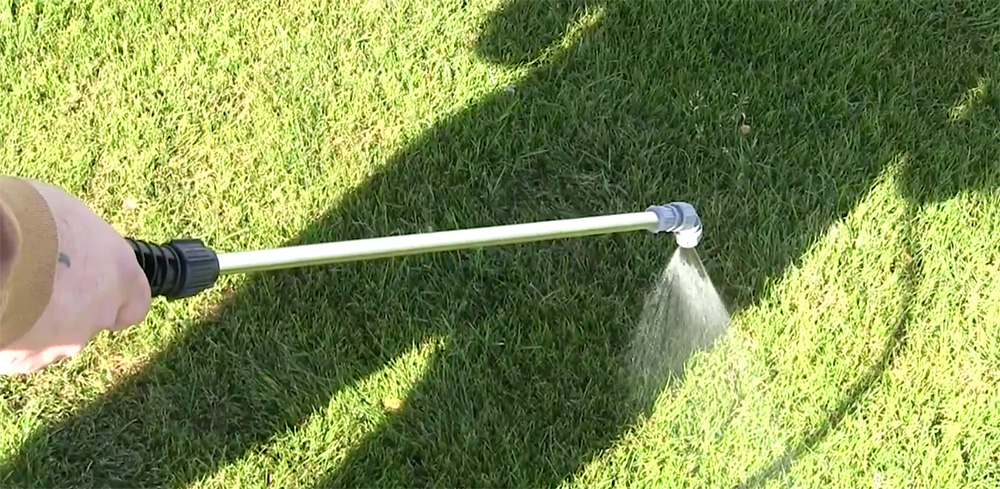With their ease of transport, small sizes and simple usability, backpack sprayers can be effective tools for your hardworking crews. But this tool will only be as effective as how well you manage it. To get the most out of your sprayer when making applications, you must properly calibrate it.
Calibration is the process of determining a sprayer’s spray volume over a given area. Knowing this is necessary in order to know how much product to add in the tank. Doing it by eye could cost you later in poor pest control and money lost on wasted product, at least—and damaged landscapes and upset clients at worst.
Eliminate these risks, and take the guesswork out of calibration, by making exact measurements. You’ll want to prepare your sprayer and tank first. Here’s how:
 Before you calibrate
Before you calibrate
You don’t want to add product to the tank until after you have calibrated the sprayer—and you shouldn’t calibrate until you have inspected the tank for leaks.
Fill the tank halfway with clean water (and only clean water) to test for leaks. Next, inspect all the sprayer’s components to ensure they are in good working order and are undamaged. Take your time when inspecting the pump, spray wand, strainers and hoses in particular.
Because the spray tip determines the spray pattern and droplet size, you must ensure yours is the correct type and size for the application you want to make. For instance, use a high-volume fan nozzle for large area broadcast applications, or a cone nozzle for spot applications.
Remove and inspect the screen behind the spray tip and clean it as needed. When cleaning screens and tips, use a soft brush and soapy water. Never use a knife or similar tool—because it will cause damage—and never try to clear a clogged tip by blowing air with your mouth.
When you’re ready to calibrate
After determining that your tank and sprayer are leak-free and in good working order, it’s time to calibrate. You’ll need some tools and a little math to do this. Watch this Ewing video to learn more.
[embed]https://www.youtube.com/watch?v=1b-vEzuXCog[/embed]




